The best varieties of blackcurrant for central Russia and the Middle Volga region
Blackcurrant, rich in vitamin C, is successfully grown in central Russia - the berry is frost-resistant, can withstand sudden changes in weather, and is unpretentious in cultivation. According to the ripening period, currants are divided into early, mid-ripening and late, and according to the size of the berries - into large- and small-fruited. The taste of black currant is sour, pleasant, with a slight tartness, depending on the variety. We will tell you about the best varieties of blackcurrant for central Russia, their advantages and ripening time.
The best varieties of blackcurrant for central Russia
Black currants are planted along the fence or in the corner of the plot - they take up little space, are undemanding to the soil, and serve as a hedge. For summer residents, not only the berries, but also the leaves are valuable - they are collected, dried and brewed into aromatic vitamin tea.
The sweetest
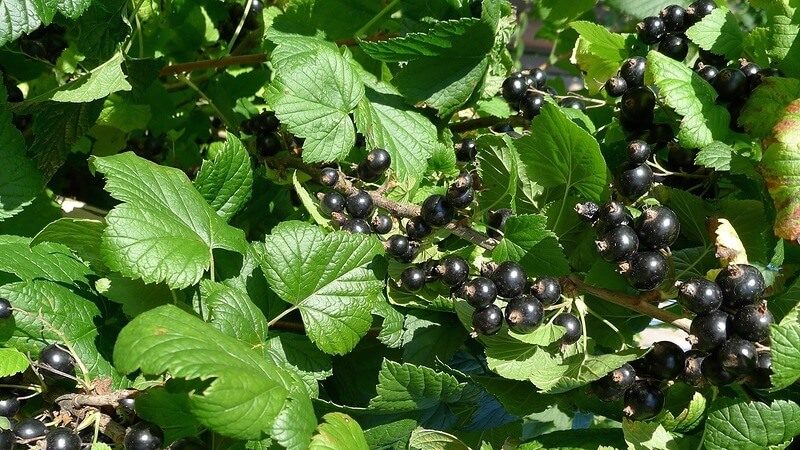
Even sweet blackcurrant berries give off a slight sourness. This taste does not spoil the pulp; on the contrary, it makes it more piquant and interesting. The fruits are eaten fresh or used to make jam - an excellent addition to tea, pancakes or white bread with butter.
Blueberry
The variety is early ripening, universal in use. The bushes are erect, of medium vigor. The shoots are long, the leaves are dark green, medium in size. The flowers are white and yellow. The berries are round, about 18 mm in diameter and weighing 1.8 g. The color is dark, blue-black, matte with a blue waxy coating.The skin is medium thick, elastic. The taste is delicate, sour-sweet, tasting score - 4.7 points. Blueberry is winter-hardy - it can withstand temperatures down to -34°C. It rarely gets sick and bears fruit consistently.
Loyalty
The mid-season variety is unpretentious. The bushes are slightly spreading, the shoots are straight, of medium length. The berries are round, average weight - 2 g, black in color. The peel is of medium thickness, the berries are shelf-stable and transportable, and do not crack. The taste is sweet and aromatic, tasting score - 4.8 points. The Vernost variety is resistant to powdery mildew and anthracnose, and is rarely damaged by insects. The fruits are used to make compotes and jams, and are also eaten fresh.
Kudmig
Mid-early variety for universal use. Medium-sized and compact bushes take up little space on the site. The shoots are straight, yellow-brown in color. The berries are round with thin skin, black in color, weighing about 2.8 g per one. The taste is sweet and aromatic, refreshing, tasting score - 5 points. Kudmig is winter-hardy and frost-resistant, and is not afraid of spring and autumn frosts. It is also valued for its attractive commercial qualities; large fruits are grown for sale.
Large-fruited
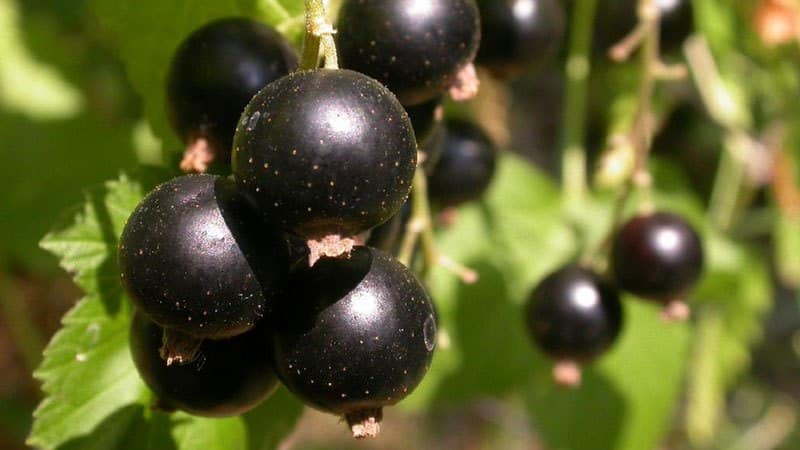
The weight of large fruits varies from 2 to 4 g. The berries look attractive on the bushes; they are used for canning and preparing winter preparations. Also, healthy fruits are stored in the freezer and then used in cooking.
Oryol serenade
The bushes of the mid-season variety are low and spreading. The leaves are wrinkled, the fruit raceme is short. The berries are round-oval, weight one - 1.9-2.5 g, rich black color. The pulp is tender, the taste is sweet and sour, refreshing. Tasting score: 4.5 points. The separation from the stalk is dry.Oryol serenade is resistant to fungal diseases and does not require much attention. Suitable for freezing, drying, canning, cooking and eating from the bush.
Sevchanka
The popular large-fruited variety is an early ripening variety. Self-fertile, meaning it does not require cross-pollination or insects. It is immune to frost and drought, powdery mildew and rust. The bushes are vigorous, the shoots are curved. The leaves are wrinkled and dark green. The weight of the berry is from 2 to 3.5 g, the shape is round, the color is black. The skin is black and glossy, the thickness is medium. Sevchanka has a sweet taste, tasting score - 4.6 points. When ripe, the berries do not fall off and retain their taste and commercial qualities.
Nightingale night
Mid-early dessert variety. The bushes are compact, the shoots are of medium length. Due to its small size, Nightingale Night is grown in small garden plots. The average weight of the berry is 2.7 g, the color is black, the shape is round. The skin is thin, without pubescence, and cannot be felt. The taste of currants is pleasant, with a refreshing aroma. Tasting score: 4.9 points. The variety is winter-hardy and suitable for any type of processing.
Interesting! Blackcurrant loves starch. To increase productivity, summer residents use an infusion of potato peels - take 1 kg of dried peelings per 10 liters of boiling water. Apply feeding during the flowering period, 3 liters per bush.
Early
Early ripening berries are not suitable for long-term transportation, but they are ideal for fresh consumption. Early black currants ripen in June - earlier than most garden berries.
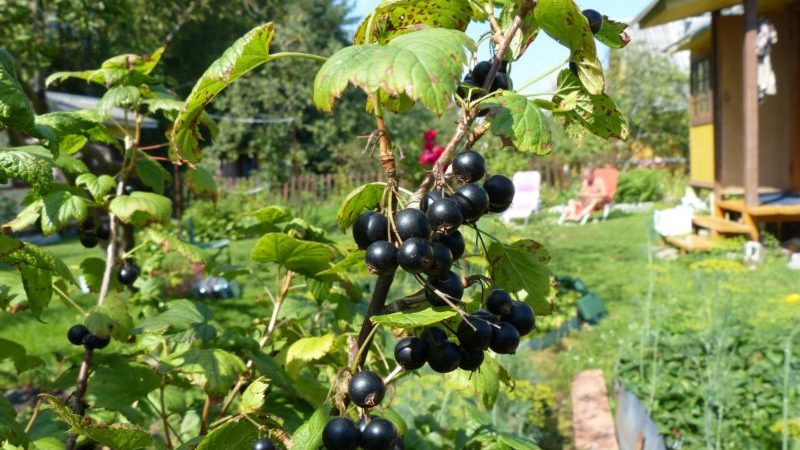
Memory of Michurin
The bushes are medium-sized, moderately spreading. The leaves are large, dark green, the raceme is short. The berries are oval, average weight - 0.8 g, black in color.The skin is of medium thickness, the flesh is fleshy and juicy, the taste is sweet and sour with refreshing notes. The variety is winter-hardy, self-fertile. Rarely damaged by insect pests, in care does not require special agrotechnical skills.
Sensei
The bushes are medium-sized, medium-spreading. The shoots are thick, the leaves are large, dark green. The berries are round, average weight - 1.6 g, medium-thick peel, black color. The pulp is tender and dense, the taste is sour-sad, refreshing with a rich berry aroma. Tasting score: 4.5 points. Sensei is distinguished by drought and frost resistance, immunity to anthracnose and rust. The berries are eaten fresh or frozen: immediately after picking, they are washed, dried on a towel, placed in a sealed bag and put in the freezer. For maximum yield, 2-3 other currant varieties are planted next to the Sensei bush.
Faith
The bushes are compact, semi-spreading, the shoots are straight. The berries are round, very large - weight reaches 3-4.2 g. The color is black, the skin is of medium thickness. The peel is dense and protects the berries from cracking and spoilage. The taste is balanced, sweet and sour. Tasting score: 4.5 points. Vera's heat resistance is average, frost resistance is high. The variety does not tolerate lack of moisture, so it is recommended to pay special attention to watering. Universal in use.
This is interesting:
Versailles currant - description and characteristics of the variety
Crop rotation rules in the garden: what can be planted next to blackcurrants
Mid-season
Mid-ripening blackcurrant varieties ripen 15-19 days later than early ones - summer residents harvest in early July. Most varieties are suitable for transportation and sale.Caring for them consists of regular watering, fertilizers and spraying.
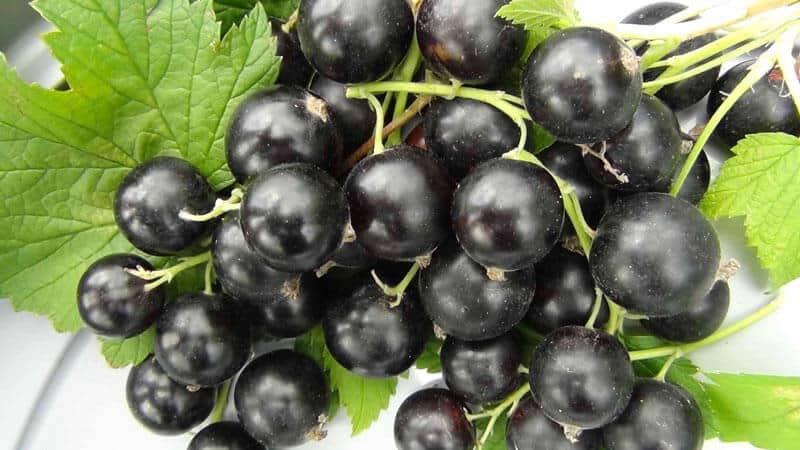
Sorcerer
The variety is universal in use and frost-resistant. Medium-sized bushes, powerful shoots, matte leaves. The weight of the berry is 1-1.4 g, the color is black, the shape is round. The pulp is tender, aromatic, the taste is sweet and sour. The sorcerer is weakly affected insect pests, including kidney mites. Due to its frost resistance, it is popular not only in central Russia, but also in the Urals.
In memory of Ravkin
The bushes are vigorous, so for landing prepare spacious areas. The leaves are dark green, medium-sized, wrinkled. The berries are black, the weight of one is about 1.6 g. The taste is pleasant, refreshing, tasting score is 4.7 points. The variety is unpretentious in cultivation, but is sensitive to a lack of minerals in the soil. It is recommended to add ammonium nitrate and potassium salt to the soil during flowering and fruit set.
Openwork
The bushes are slightly spreading, the fruit cluster is medium. The berries on it are located tightly to each other and do not fall off after ripening. The shape is round-oval, the color is black, the weight is about 1.4 g. The taste is simple, sweet and sour. The harvest is harvested in the tenth of July. Currants are frozen or dried for the winter, eaten fresh, added to baked goods and made into toppings from the berries.
Interesting! Not only sweet dishes are prepared from black currants, but also seasonings for meat. The tart taste of the berry harmoniously combines with ingredients such as honey and ground paprika.
Late
Late varieties of black currant are universal - suitable for both cooking and transportation. During the growing process, summer residents pay attention to care: they regularly loosen the soil, spray the bushes to protect them from insects, and remove weeds.Late varieties ripen in late July or early August.
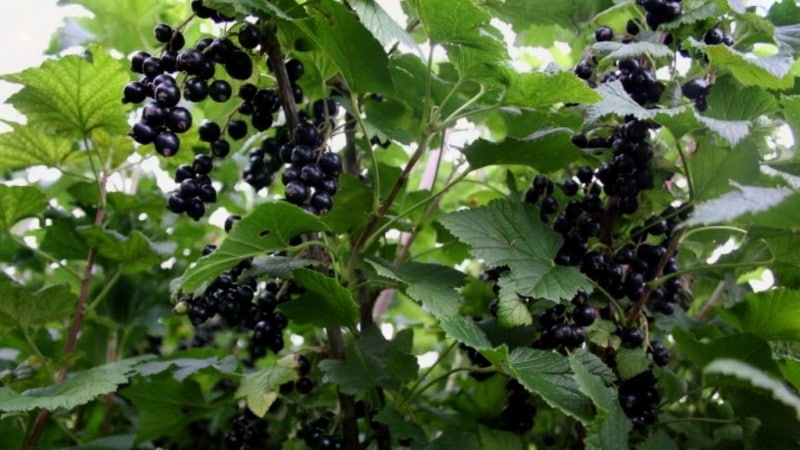
Chernavka
The bushes are semi-spreading, the fruit raceme is long. The berries are round, weigh about 1.5 g, the skin is thin and black. The taste is classic currant, sweet and sour, the tasting rating of the variety is 4.5 points. Chernavka is rarely damaged by spider mites and slugs, is resistant to sudden drops in temperature and fungal diseases. The berries are grown in well-lit, sunny areas. After ripening, Chernavka hangs on the bushes for 10-15 days without falling off.
Vologda
The late-ripening variety is valued for its pleasant taste, stable yield, and ease of cultivation. The bushes are vigorous with thick shoots. The leaves are round and green. The weight of the berry is 2-3 g, the shape is round, the color is black. The skin is thin, the flesh is sweet and sour. The variety is transportable, versatile and winter-hardy, rarely affected by viral and fungal diseases.
Currant varieties for the Middle Volga region
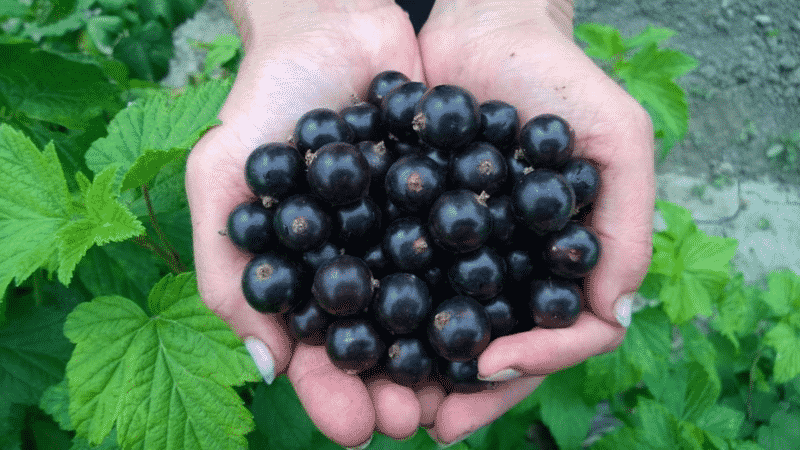
What are the best blackcurrant varieties for the Middle Volga region that gardeners recommend? The Middle Volga region includes the Samara, Saratov, Ulyanovsk and Penza regions and the Republic of Tatarstan. The climate is warm, with moderate precipitation. Summer is long, without frost, so black currants bear fruit consistently in the Middle Volga region.
One of the common varieties is Dashkovskaya. The berries are famous for their sweet and delicate taste, their shape is round, their weight is about 1.3 g. The skin is thin, the color is black, the tasting score is 4.2 points. The ripening period is average, drought resistance is high. The yield reaches 3 kg of berries per bush.
Summer residents also plant the early ripening variety of black currant Svetlolistnaya. The berries are large and round, weigh about 1.5 g. The taste is pleasant, the score is 4.8 points.The bushes are compressed, the shoots are thin and pink. Light leaf rarely gets sick and is universal in use. The berries make aromatic jams, confitures, and jellies.
Conclusion
List of sweet blackcurrant varieties for central Russia - Golubichka, Vernost, Kudmig; large-fruited - Oryol Serenade and Nightingale Night. The varieties Vera and Pamyat Michurina are grown for early harvest, and Chernavka and Vologda for late harvest. In the Middle Volga region, Svetlolistnaya and Dashkovskaya currants are popular, with attractive fruits and a delicate harmonious taste. Currants grow faster if you regularly fertilize the soil with mineral fertilizers and loosen the soil. A suitable place for planting is a sunny area. Shade or partial shade are not suitable.